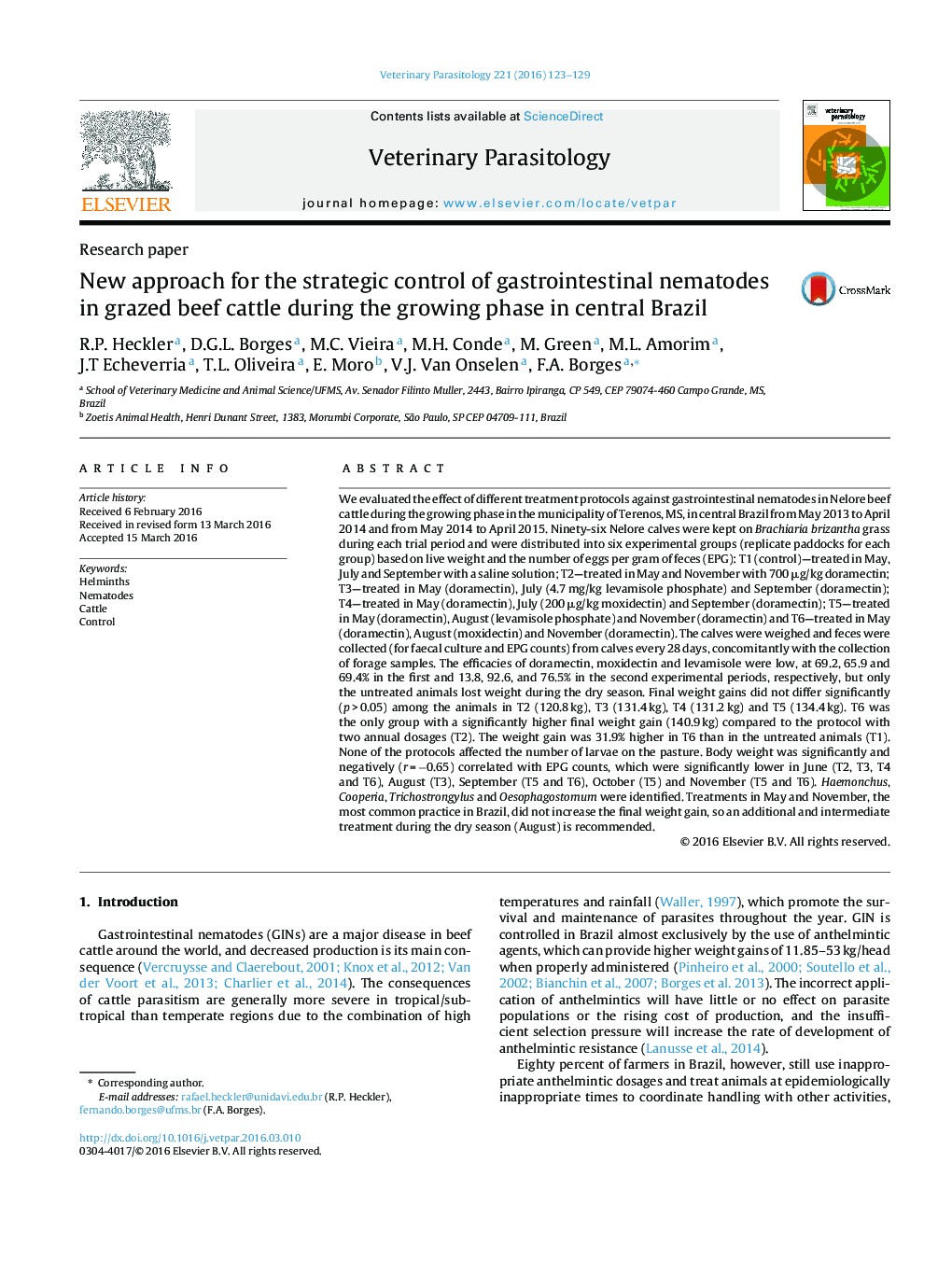| کد مقاله | کد نشریه | سال انتشار | مقاله انگلیسی | نسخه تمام متن |
|---|---|---|---|---|
| 5802199 | 1555655 | 2016 | 7 صفحه PDF | دانلود رایگان |
- This study showed a practical recommendation to control worms in beef cattle in Brazil.
- Treatments in May, August and November can increase weight gains by up to 34.1Â kg.
- The treatment during the dry season is necessary to obtain high productivity.
- The most commonly used treatment in the Brazilian beef cattle, performed in May and November, did not increase final weight gains in beef calves.
We evaluated the effect of different treatment protocols against gastrointestinal nematodes in Nelore beef cattle during the growing phase in the municipality of Terenos, MS, in central Brazil from May 2013 to April 2014 and from May 2014 to April 2015. Ninety-six Nelore calves were kept on Brachiaria brizantha grass during each trial period and were distributed into six experimental groups (replicate paddocks for each group) based on live weight and the number of eggs per gram of feces (EPG): T1 (control)-treated in May, July and September with a saline solution; T2-treated in May and November with 700 μg/kg doramectin; T3-treated in May (doramectin), July (4.7 mg/kg levamisole phosphate) and September (doramectin); T4-treated in May (doramectin), July (200 μg/kg moxidectin) and September (doramectin); T5-treated in May (doramectin), August (levamisole phosphate) and November (doramectin) and T6-treated in May (doramectin), August (moxidectin) and November (doramectin). The calves were weighed and feces were collected (for faecal culture and EPG counts) from calves every 28 days, concomitantly with the collection of forage samples. The efficacies of doramectin, moxidectin and levamisole were low, at 69.2, 65.9 and 69.4% in the first and 13.8, 92.6, and 76.5% in the second experimental periods, respectively, but only the untreated animals lost weight during the dry season. Final weight gains did not differ significantly (p > 0.05) among the animals in T2 (120.8 kg), T3 (131.4 kg), T4 (131.2 kg) and T5 (134.4 kg). T6 was the only group with a significantly higher final weight gain (140.9 kg) compared to the protocol with two annual dosages (T2). The weight gain was 31.9% higher in T6 than in the untreated animals (T1). None of the protocols affected the number of larvae on the pasture. Body weight was significantly and negatively (r = â0.65) correlated with EPG counts, which were significantly lower in June (T2, T3, T4 and T6), August (T3), September (T5 and T6), October (T5) and November (T5 and T6). Haemonchus, Cooperia, Trichostrongylus and Oesophagostomum were identified. Treatments in May and November, the most common practice in Brazil, did not increase the final weight gain, so an additional and intermediate treatment during the dry season (August) is recommended.
Journal: Veterinary Parasitology - Volume 221, 15 May 2016, Pages 123-129
